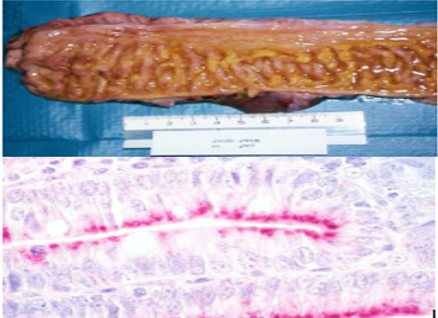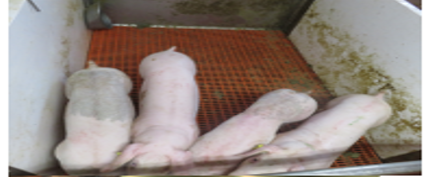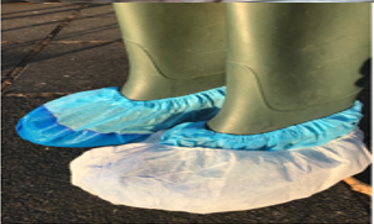Illeitis
Disease overview
Lawsonia intracellularis,the bacteria whichcauses Porcine Proliferative Enteropathy (also known as Porcine Ileitis) is found worldwide and is present on most, if not all, Irish farms. Ileitis reduces animal well-being, contributes towards increased use of antimicrobials and causes significant economic losses on intensive pig production systems. The bacterium L. intracellularis is found in the cells lining the small and large intestines and is highly pathogenic even at low doses. It is excreted in pig faeces for up to 14 weeks and can survive a further two weeks in the environment. Pig faeces act as a major source of the organism on farms. Farms with particularly dirty pens and passageways are likely to have persistent problems with Ileitis. The organism is found in rodents, especially mice, and birds which makes eradication on farm difficult. Pigs are infected with Ileitis from approximately 2 to 3 months of age, mainly as a sub-clinical disease, following predisposing factors such as mixing, large group size, diet change and a decline in L. intracellularis-specific colostral antibodies.

Ileitis
Subclinical disease caused by L. intracellularis infection in pigs (Ileitis) is the most common form and includes a reduction in ADG and FCR which are usually evident without diarrhoea. Chronic forms of L. intracellularis are seen in pigs aged from 6 to 20 weeks with lack of homogeneity in batches as a key characteristic. Acute disease is rare, but the clinical signs can be characterised by acute diarrhoea varying in severity from black tarry faeces to watery diarrhoea and blood. Acute forms are usually seen in pigs from 4 to 12 months of age with additional signs including anaemia and high mortality which mainly affects replacement gilts and fatteners.

Diagnosis
- L. intracellularis is detected mostly through PCR on faecal samples. Sock samples provide a useful method of quantitative PCR testing in early fattener pigs
- Clinical signs in particular- unevenness in batches and reduction in ADG (see section above) may also aid in Ileitis diagnosis
- Post mortem results on affected pigs may show thickening of the ileum
- ELISA based serology can detect specific antibodies in serum from fattening pigs and this can help determine both the presence of L. intracellularis and the time of infection

Treatment
Clinical outbreaks of L. intracellularis can be treated using antibiotics. However antimicrobial treatment is often too late to prevent the intestinal damage associated with subclinical Ileitis which is often responsible for economic losses on farm. Farms often also use selected medication including zinc oxide in pigs from 6 weeks of age as a preventive measure which can be added through feed
Control
- Strict adherence to all-in, all-out pig flow
- Avoid overstocking and mixing of pigs
- Disinfection is recommended as the bacteria are susceptible to disinfectants and cleaning
- Immunisation by vaccination. An inactivated vaccine against Lawsonia for intramuscular use can be combined with other piglet vaccines in the farrowing house. Vaccination is effective at reducing the impact of Lawsonia infection and results in marked improvements in fattener performance on affected farms.In addition, studies have shown that following L. intracellularis vaccination the prevalence and shedding of Salmonella typhimurium isreduced.
